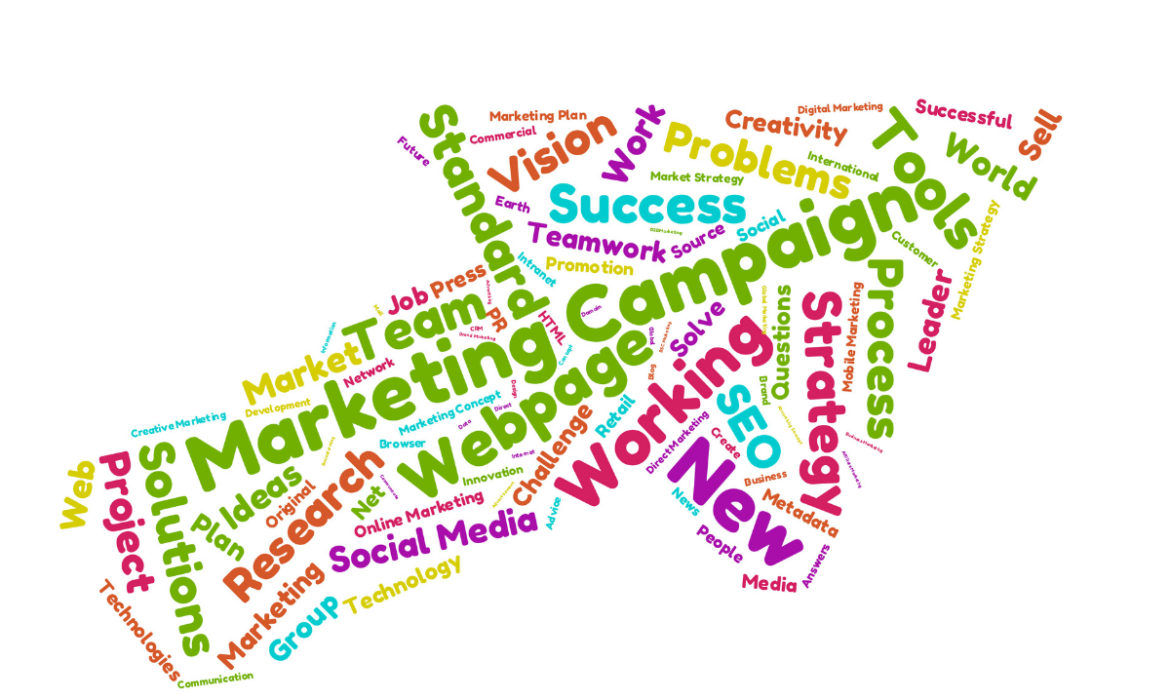How to Use TikTok for Holiday Promotions
How to Use TikTok for Holiday Promotions
In recent years, TikTok has established itself as a key platform for connecting with audiences of all ages thanks to its dynamic and creative format. During the holiday season, this social network can be a powerful tool for carrying out festive promotions that capture the attention of consumers and increase the visibility of a brand or business.
One of the most effective ways to use TikTok this holiday season is by creating themed content that combines current trends with festive elements. Challenges are at the heart of the platform, and a holiday challenge can make a big impact if presented in a creative and engaging way. For example, a clothing brand could launch a challenge where users show off their best holiday outfits, tagging the brand and using a custom hashtag. Not only does this encourage engagement, but it also amplifies the organic reach of the content.
Another effective strategy is collaborating with content creators and influencers. On TikTok, influencers have a high level of connection with their followers, making them ideal allies for promoting products or services. During the holidays, a campaign where an influencer highlights a specific product, such as an ideal gift or themed decoration, can translate into increased sales and significant exposure for the brand.
Using TikTok Ads is another key resource to maximize the reach of holiday promotions . The platform offers multiple ad formats, from in-feed videos that integrate into the user’s natural flow to full-screen takeover ads, perfect for capturing attention immediately. Designing advertising campaigns with messages focused on exclusive discounts, limited offers, or free shipping can be the incentive users need to take action.
Additionally, visual storytelling is key on TikTok. Creating content that tells a holiday-related story and shows how a product or service fits perfectly into those celebrations can resonate emotionally with consumers. A video that captures the process of decorating a Christmas tree using a brand’s products, accompanied by catchy holiday music, can be memorable and highly shareable.
Another tactic is to leverage TikTok’s native tools, such as filters, special effects, and sounds, to make holiday promotions more appealing . Creating a custom holiday filter associated with the brand or a unique sound can encourage users to engage with the content and generate a stronger presence during the season.
It’s also crucial to post content regularly to stay relevant during the holidays. TikTok rewards consistency and engagement, so planning a festive posting schedule helps keep followers engaged. This can include behind-the-scenes videos, exclusive product promotions, or even messages of gratitude for the support received throughout the year.
Finally, monitoring emerging TikTok trends during the season is essential. Adapting campaigns to what is booming on the platform allows you to take advantage of the algorithm and maintain connection with audiences.
Using TikTok for holiday promotions not only boosts a brand’s visibility, but also creates opportunities to engage with consumers in an authentic and fun way. With creativity and a good strategy, this platform can be the key to standing out during the holiday season.
Fast Shipping Promotion Ideas for the Holidays
Fast Shipping Promotion Ideas for the Holidays
Holiday fast shipping promotions have taken center stage in modern retail, especially during the holiday season when consumers are looking for convenience and efficiency to receive their purchases on time. Implementing fast shipping promotion ideas not only boosts sales but also strengthens customer satisfaction, creating a positive and memorable shopping experience.
Offering free shipping for orders that meet a minimum amount is a proven strategy that attracts consumers. During the holidays, shoppers often purchase multiple products at once, so encouraging higher-value purchases in exchange for a tangible benefit, such as free, expedited shipping, can significantly increase the average checkout. Companies can highlight these types of promotions on their landing pages or through email marketing campaigns.
Another effective idea is to implement exclusive discounts for those who choose the express shipping option. This can be aimed at customers who are making last-minute purchases or those who are looking to ensure that their gifts arrive in time for the celebrations. An offer such as “Get 20% off your express shipping” can be a game-changer for those who are hesitating between buying online or looking for physical alternatives.
Fast shipping can also be positioned as a benefit for loyalty program members. For example, customers who subscribe to a membership service or accumulate points with their purchases can enjoy priority shipping during the holiday season. This not only incentivizes loyalty, but also creates a sense of exclusivity that consumers value.
Limited-time promotions are particularly effective during the holidays. Announcing a specific period when expedited shipping will be free or available at a reduced cost can create a sense of urgency that motivates shoppers to act immediately. Campaigns like “48 hours of free express shipping” not only increase conversions, but also appeal to the most hesitant consumers.
Additionally, businesses can leverage social media to creatively promote fast shipping promotion ideas . Posting real-time updates about shipping deals or collaborating with influencers to highlight these benefits can capture the attention of a wider audience. Short videos that showcase the ease of purchasing and receiving products quickly can have a positive impact and motivate consumers to choose a specific brand.
For small businesses, partnering with local courier services can be a viable strategy to offer fast shipping without incurring excessive costs. This approach also helps ensure that products arrive on time and reduces the risk of delays that can impact customer experience. Sending personalized messages to buyers confirming the speed of their delivery can build trust and loyalty.
Including clear messaging about shipping times on product pages and at the checkout stage is essential to ensure consumers understand the options available. Highlighting phrases such as “Guaranteed delivery before Christmas” can be the deciding factor for many shoppers.
Fast shipping promotion ideas are powerful tools to capture consumers’ attention during the holidays. These strategies not only ensure a convenient and efficient shopping experience, but also strengthen the connection with the brand, generating positive results in both sales and customer satisfaction.
The Power of Personalization in Christmas Gifts
The Power of Personalization in Christmas Gifts
The power of personalization in holiday gift giving has transformed the way people express affection and appreciation during the holidays. Personalized gifts not only demonstrate thoughtfulness, but also strengthen the emotional bonds between givers and receivers. In a world where mass production rules, this more intimate and exclusive approach has a significant impact.
Personalizing a gift means tailoring it to the tastes, interests, or experiences of the person who will receive it. This can range from including their name or initials to designing something unique that reflects their personality. This level of detail communicates a clear message: “I know you and I care about you.” During the holiday season, where the act of gift-giving symbolizes gratitude and love, this emotional connection becomes even more relevant.
One of the main reasons why personalization has become so popular is the advancement of technology. Online platforms and digital tools allow consumers to design custom-made products with ease. From photo albums and embroidered clothing to engraved jewelry and unique accessories, the options are nearly endless. Companies have responded to this trend by offering personalization services as an integral part of their holiday sales strategy.
In addition to their emotional value, personalized gifts also stand out for their exclusivity. In a market saturated with generic products, receiving something designed specifically for you is memorable and special. These types of gifts become not just objects, but meaningful memories that people treasure for years.
The power of personalization in holiday gifting also benefits businesses. This approach helps differentiate themselves from competitors, build customer loyalty, and foster stronger relationships with their audience. Brands that offer customization options are often perceived as more approachable and committed to the individual needs of their consumers. Additionally, personalizing gifts increases the perceived value of products, which can justify higher prices and improve profit margins.
For buyers, personalization also has practical benefits. When faced with the pressure of finding the perfect gift, having the option to personalize products can make the selection process easier. This approach allows buyers to ensure that their gift will be unique and meaningful, eliminating the worry of appearing unoriginal or impersonal.
On the other hand, it is important to consider the additional time and costs that personalization may entail. Planning ahead is crucial to ensure that personalized gifts arrive in time for the celebrations. Fortunately, many companies offer fast delivery options or reasonable turnaround times for these orders, making this trend more accessible to everyone.
The power of personalization in holiday gifting lies in its ability to emotionally connect with people. Not only does this approach make gifts more meaningful and memorable, but it also reflects the intention and effort behind the act of gifting. During the festive season, where details matter more than ever, opting for personalized gifts can make the difference between an ordinary gift and a truly unforgettable one.
How to Plan Your End-of-Year Campaigns in Advance
How to Plan Your End-of-Year Campaigns in Advance
Planning your holiday campaigns in advance is essential to make the most of this key season for business. During this period, consumption increases significantly, and a well-structured strategy can make the difference between a resounding success and a missed opportunity. The key is to anticipate market demands, identify the right opportunities and prepare all the necessary resources in good time.
A first step to effective planning is to analyze the results of previous campaigns. Reviewing what worked and what didn’t in previous years will allow you to fine-tune your tactics and focus on what makes the most impact. Data such as your customers’ behavior, best-selling products, and market trends are valuable in designing campaigns aligned with your audience’s interests. This analysis also helps you set clear and realistic goals for the season.
It is vital that you define a calendar of activities that covers all aspects of the campaign. From the creation of promotional content to the execution of advertising strategies, every detail must be perfectly coordinated. Setting key dates for launches, promotions and mid-term evaluations will allow you to keep a constant check on the progress of the campaign.
Another essential aspect is segmenting your target audience. Understanding who your customers are and what they are looking for during the holidays makes it easier to personalize messages and offers. For example, you can design specific campaigns for repeat buyers, new customers, or segments with particular interests. This approach not only improves the effectiveness of your actions, but also strengthens the relationship with your audience.
Selecting the right channels to promote your campaigns is equally important. From social media to email and digital advertising, each platform should be chosen based on its reach and relevance to your audience. Also, make sure to maintain consistent communication across all channels, reinforcing the key messages of your holiday campaign .
Preparing logistics resources is another critical element. Anticipating increased demand means having sufficient inventory, trained staff, and technological systems ready to handle the additional influx of orders. A smooth and efficient shopping experience is crucial to maintaining customer satisfaction during this time of high traffic.
Consider implementing emotional marketing strategies as well. End-of-year campaigns often have a more emotional focus, appealing to values such as family, gratitude and generosity. Incorporating these elements into your messages can create a deeper connection with your audience and increase the likelihood of conversion.
Finally, continually evaluate the results of your campaigns. Real-time metrics allow you to adjust strategies on the fly and ensure that objectives are being met. Use analytical tools to measure the performance of your actions and detect areas for improvement.
Planning your holiday campaigns in advance not only ensures more efficient execution, but also positions you to stand out in a highly competitive market. With a strategic, well-structured and adaptable approach, you can maximize your results and close the year with a bang.
Strategies to Attract Customers to Physical Stores on Black Friday
Strategies to Attract Customers to Physical Stores on Black Friday
Black Friday is one of the most important dates for retail, and although online shopping has gained popularity, physical stores remain a key destination for consumers looking for exclusive deals. Implementing effective strategies to attract customers to your store can make all the difference to your results.
A successful approach starts with creating a unique in-store experience. During Black Friday , customers value more than just deals; they want convenience, speed, and an atmosphere that motivates them to stay. Decorating the space with festive elements and offering live music or special activities can transform your store into an engaging and memorable environment. Personalization also plays an important role: distributing branded bags or promotional items can foster a sense of exclusivity.
Promoting exclusive discounts for in-store purchases is another effective way to attract customers. Many consumers are willing to physically visit a store if they know they will find products or prices that are not available online. Announcing these promotions in advance, through social media or email marketing campaigns, generates anticipation and ensures a greater flow of visitors on the day of the event.
Loyalty programs can be especially helpful during this holiday season. Offering extra points, exclusive gifts, or early access to deals to frequent customers can be an incentive for them to choose your store over the competition. Plus, this strategy fosters long-lasting relationships with your most loyal consumer base.
One service that shouldn’t be overlooked is in-store pickup. Many shoppers prefer to avoid shipping costs and the uncertainty of late deliveries during Black Friday . If you combine this service with a positive pickup experience, such as additional discounts or free samples, you can turn these visits into additional purchases.
Organizing specific events during the day is also a powerful tactic. For example, offering product demonstrations, giveaways, or even themed photo shoots can draw crowds. Additionally, collaborating with local influencers to promote these activities can significantly increase traffic to your store.
Technology is an important ally. Using push notifications, geolocation, and hyperlocal ads on social media can capture the attention of those who are near your store. These tools allow you to communicate flash offers and remind consumers that your store is a convenient option to take advantage of Black Friday.
Another key strategy is to ensure an efficient and stress-free shopping experience. Increasing sales floor staff and training them to provide fast and friendly service is essential during high-demand days. Additionally, providing break areas or mobile device charging stations can keep customers in the store longer.
Finally, don’t forget the importance of strategic alliances. Working with complementary brands or local businesses to offer joint promotions can attract a broader and more diverse audience.
Black Friday isn’t just about discounts; it’s about creating a shopping experience that motivates customers to leave their homes and choose your store as their primary destination. By applying these strategies, you can not only increase your sales, but also strengthen your relationship with your customers for future seasons.
Marketing Campaigns Inspired by the Spirit of Giving
Marketing Campaigns Inspired by the Spirit of Giving
Marketing campaigns inspired by the spirit of giving are a powerful way to emotionally connect with consumers during the holiday season. Not only does this approach highlight the importance of generosity and kindness, it also strengthens a brand’s image as committed to positive values, which fosters customer loyalty and engagement.
The spirit of giving can be reflected in a variety of ways in your campaigns. One effective strategy is to associate your sales with donations to charitable causes. For example, many brands choose to donate a percentage of each purchase to organizations that support communities in need. This model not only incentivizes sales, but also generates a positive impact on society, aligning with the altruistic atmosphere of the holidays.
Another idea is to offer additional gifts to customers who make purchases in your store. For example, including free gift wrapping, personalized cards, or even small gifts can enhance the shopping experience and leave a lasting impression. These details, while simple, reflect the spirit of giving and make your customers feel valued.
Digital content also plays a crucial role. Creating social media campaigns that invite consumers to share stories of generosity can generate engagement and foster a close-knit community around your brand. You can ask your followers to tag people who inspire them or share how they plan to give back to their communities during the holidays. Offering symbolic prizes for the best stories can increase engagement and reach for your campaign.
Collaborations with other brands or influencers can also amplify your message. Find allies who share your values and together create initiatives that promote the spirit of giving . For example, organizing charity events, such as food or toy drives, can demonstrate your commitment to the community while also attracting customers interested in supporting a worthy cause.
It’s important that your campaign message is authentic and genuine. Consumers can sense when a brand is using emotional themes solely as a sales tactic. Make sure your actions support the message, whether through donations, volunteering, or responsible business practices. Transparency and consistency are essential to gaining your audience’s trust.
The spirit of giving can also be reflected in your products or services. For example, creating special holiday product lines with proceeds supporting a specific cause can attract consumers looking to give something meaningful. Additionally, campaigns like “Buy One, Give One” are highly effective at engaging customers in giving back.
The visual communication of your campaigns should align with the theme. Images that convey warmth, togetherness, and joy can evoke positive emotions and strengthen your campaign message. Include phrases that reinforce the idea of generosity, such as “This year, give more than things: give hope” or “Every purchase, a gesture of love.”
Ultimately, campaigns inspired by the spirit of giving not only aim to boost sales but also to create a positive impact on society and leave a lasting impression in the hearts of your customers. At this time of year, shared emotions and values can be just as important as the products you offer.
How to Use Retargeting to Attract Holiday Shoppers
How to Use Retargeting to Attract Holiday Shoppers
Retargeting is a key strategy to capture the attention of buyers who showed interest in your products or services but did not complete a purchase. During the holiday season, this technique becomes even more relevant, as consumers tend to compare options before making purchasing decisions. Taking advantage of this tool correctly can make a big difference in your end-of-year sales.
The key to successful retargeting is reminding users of what they left undone. If a potential customer visited your online store and browsed your holiday products without making a purchase, a well-designed ad can draw them back. Make sure your ads include engaging product images and personalized messaging, such as “Still interested in this item?” or “Last chance to get this perfect gift.”
To maximize impact, tailor your retargeting ads to the holiday season. You can include visual elements like snow, festive lights, or holiday-themed messaging. Offering specific incentives, like additional discounts or free shipping, can also motivate customers to complete their purchase. Messaging like “Send this gift with free shipping when you buy today” creates urgency and reinforces the value of your offer.
Segmenting your audience is essential for effective retargeting . Not all of your site visitors have the same interests or purchase intentions. Categorize your users based on the pages they visited, the products they added to their cart, or the time they spent on your site. With this information, you can create personalized ads that respond to their needs and show them the products they are really interested in.
Additionally, it’s important to leverage the right platforms for your retargeting campaigns. Google Ads and Facebook Ads are popular and effective tools, but you can also explore platforms like Instagram or even Pinterest, which have a visual focus ideal for highlighting holiday products. Make sure to optimize your ads for mobile devices, as a large portion of holiday shopping is done on smartphones.
Using dynamic retargeting is another powerful strategy. With this technique, ads are automatically tailored to show the specific products that users browsed or left in their cart. This creates a more personal connection and increases the likelihood of conversion. For example, if someone searched for children’s toys, the ad can show a personalized selection of the products they browsed along with special offers.
Time is a crucial factor during the holidays. As the holiday shopping deadline approaches, retargeting ads can highlight important deadlines like “Buy by December 20th for guaranteed delivery before Christmas.” This approach creates a sense of urgency that can prompt hesitant shoppers to act quickly.
It’s equally essential to measure and adjust your retargeting campaigns on an ongoing basis. Use analytics tools to evaluate ad performance, cost per conversion, and ROI. If you identify that certain messages or creatives aren’t working, make timely changes to improve results.
Retargeting is an essential technique for attracting holiday shoppers and converting visits into sales. By personalizing your ads, using an attractive design, and taking advantage of the sense of urgency that comes with the season, you can significantly increase your revenue during this key time .
Tips for Creating an Engaging Promotions Page
Tips for Creating an Engaging Promotions Page
An attractive promotions page can make the difference between capturing your customers’ attention and going unnoticed in a competitive market. During high-demand seasons, such as Black Friday or the Christmas holidays, it is crucial to design a page that stands out not only for its appearance, but also for its functionality and clarity. Here are some essential strategies to achieve this.
The first step to creating an engaging promotions page is to define a visual design that grabs attention. Opt for colors and fonts that are consistent with your brand identity but also convey urgency, such as red or yellow tones, ideal for promotions. A clean and organized layout ensures that users don’t feel overwhelmed when browsing your page. High-quality images that showcase your products or services in an attractive context also increase the likelihood of conversion.
Clarity in communication is another key aspect. Make sure promotions are clearly visible, highlighting discount percentages or additional benefits such as “free shipping” or “buy one, get one.” Eye-catching phrases such as “Limited time offer” or “Today only” can create a sense of urgency that motivates users to take immediate action. Avoid overloading the page with too much information; the goal is to make the customer experience easier.
Another key point is to structure your site so that it is easy to navigate. Categorize promotions by product type, price, or relevance to different audiences. An intuitive search engine or filters can improve the user experience and help them quickly find what they are looking for. Additionally, including customer testimonials or reviews can increase trust and persuade visitors to make a purchase.
Mobile optimization is a must when designing a promotions page. During the holiday season, a large percentage of purchases are made via smartphones, so your page should be responsive and load quickly. Buttons like “Add to Cart” or “Buy Now” should be easy to find and use on small screens.
Another important aspect is to integrate interactive elements that capture attention. Countdown to the end of the promotion, dynamic banners or short videos highlighting the benefits of your products can make the page more attractive and memorable. These tools not only attract attention, but also generate greater engagement from visitors.
Don’t forget to include clear and effective calls to action. Phrases like “Take advantage of this offer today” or “Exclusive discounts when you sign up” can guide the user to the next step in the purchase process. Also, highlight any additional benefits, such as flexible return policies or satisfaction guarantee, that can give them an extra reason to trust your offer.
An engaging promotions page should be supported by constant analysis. Use web analytics tools to monitor user behavior, identify points for improvement, and adjust elements such as layout, calls to action, or categories as needed. Not only will this improve the page in the short term, but it will also help you refine your strategies for future campaigns.
In conclusion, a well-designed and optimized promotions page not only boosts sales, but also improves the customer experience, increasing the chances of long-term loyalty.
The Role of Local SEO in the Holiday Shopping Season
The Role of Local SEO in the Holiday Shopping Season
The holiday shopping season is one of the most important for businesses, and leveraging strategic tools like local SEO can make the difference between being found by customers or missing out on opportunities. This approach optimizes a business’s visibility in searches related to a specific location, connecting consumers with the closest options to meet their needs.
Local SEO allows businesses to be easily found when people search for products or services within their geographic area. During the holiday season, this translates into attracting shoppers looking for gifts, festive items, or holiday services. As “near me” searches become increasingly popular, especially on mobile devices, your business’s optimized presence on local platforms is crucial to capturing this traffic.
An essential step to taking advantage of local SEO during the holiday season is to make sure your Google My Business profile is fully updated. Include accurate information about business hours, location, phone number, and relevant categories. It’s also important to highlight any special promotions or events you’re offering for the holidays, such as discounts, extended hours, or additional services.
Additionally, reviews play a key role in local SEO success. Shoppers trust businesses with positive ratings and recent reviews more. Encouraging your customers to leave reviews after a purchase or experience can improve your rankings and build trust with new consumers. Authenticity and quick responses to reviews also strengthen your online reputation.
Content is another vital aspect of local SEO. Creating posts on your website or social media that highlight holiday-relevant topics, such as gift-selection tips, decoration ideas, or personalized services, can attract a targeted audience. By including keywords related to your location and products, such as “unique holiday gifts in [city],” your business will be more likely to show up in related searches.
Mobile searches dominate the holiday season, so optimizing your website for these devices is a must. Make sure it’s easy to navigate, quick to load, and includes an interactive map that guides customers to your physical location. Clear calls to action, such as “Visit us today” or “Book now,” can also increase engagement with your page.
Another effective tactic is to collaborate with other local businesses. Strategic partnerships can help you expand your reach, whether by hosting joint events or promoting your services on their platforms. Not only do these partnerships benefit local SEO, but they also foster a sense of community and mutual support.
During the holiday season, many customers are looking for personalized experiences. Ensuring that your local SEO efforts highlight unique aspects of your business, such as personalized service or exclusive products, can set you apart from the competition. Additionally, by maintaining active communication with your customers through social media or email campaigns, you can strengthen the relationship and motivate them to make you their preferred choice.
Local SEO is an indispensable tool to maximize visibility and sales during the holiday shopping season. Implementing effective strategies not only positions you better in search results, but also connects your business with the community, ensuring a successful and memorable season.
How to Prepare Your Business for the Increase in Online Shopping
How to Prepare Your Business for the Increase in Online Shopping
The holiday season represents one of the most important seasons for businesses, especially due to the increase in online shopping. Properly preparing your business for this demand not only ensures a positive experience for customers, but also strengthens your brand reputation and maximizes revenue opportunities. Implementing strategic measures is key to successfully facing this challenge and adapting to modern consumer expectations.
One of the essential steps is to ensure that your website is optimized to handle an increase in traffic. During the holiday season, spikes in visits are inevitable, and any technical issues can translate into lost sales. Make sure that your platform is equipped to process transactions quickly and without errors. Furthermore, optimizing loading times not only improves the user experience but also influences the purchasing decision, as consumers tend to abandon slow pages.
Your site design also plays a crucial role in how customers perceive your business. A clear, easy-to-navigate, mobile-friendly interface is essential, as much of online shopping is done on smartphones. It’s also important to highlight relevant promotions, offer clear product descriptions, and facilitate a fast and secure checkout process. This not only simplifies the customer experience, but also increases conversion rates.
Setting up an efficient inventory management system is another vital aspect. Increased online shopping during the holidays can lead to stockouts, causing customer dissatisfaction. Maintaining accurate stock control and predicting demand for popular products prevents such inconveniences. In addition, clearly communicating available quantities in real time builds buyer confidence.
Customer service should also be strengthened. During this time, consumers often have questions about shipping, returns, or product availability. Investing in a team trained to respond quickly or implementing chatbots on your website can make a difference in customer satisfaction. Personalized attention creates a positive connection with your brand and encourages loyalty.
On the other hand, shipping times are a decisive factor for consumers. Working with reliable suppliers and offering various delivery options, including expedited shipping, ensures that orders arrive on time, which is especially important during the holidays. It is also advisable to inform customers about purchase deadlines and guarantee deliveries before the holidays.
Marketing must also adapt to the increase in online shopping. Targeted campaigns, using emails, social media or paid ads, are essential to drive traffic to your store. Additionally, special promotions, such as limited-time discounts or free shipping, incentivize purchases.
Finally, security is a priority. With the growth of e-commerce, cyber threats also increase. Implementing SSL certificates, secure payment systems, and data protection measures reinforces customer confidence when making transactions on your site.
Preparing for the surge in online shopping during the holidays requires a comprehensive approach that spans everything from technical optimization to impeccable customer service. With these strategies, your business will be ready to make the most of the season and deliver a memorable experience for your shoppers.













